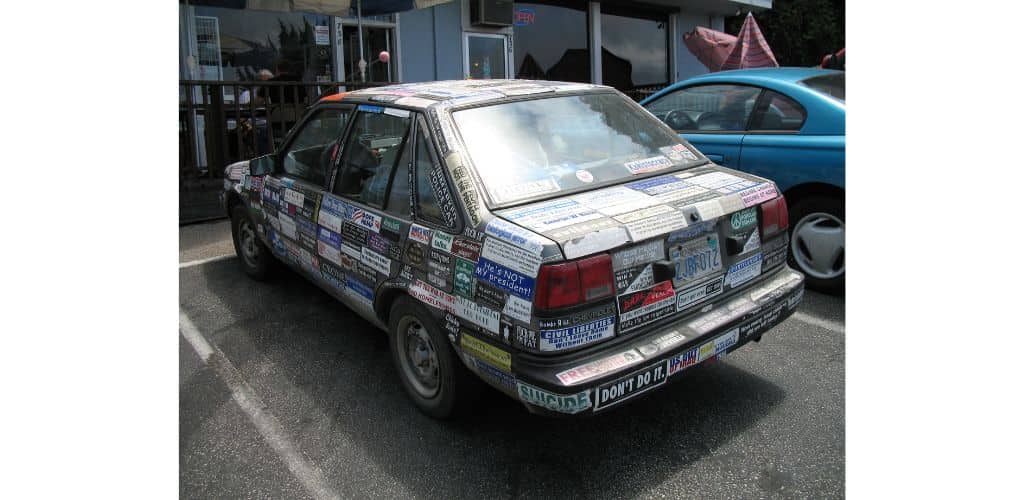An en banc panel of the Federal Circuit recently heard arguments in a case that could change how courts assess design patents for “obviousness.”
LKQ Corporation and GM Global Technology Operations LLC are engaged in a dispute over GM’s design patent for a vehicle fender.
LKQ, which makes auto parts, argued that GM’s design patent was invalid as obvious. LKQ cited two earlier designs that it claimed looked the same as GM’s patented design.
The Patent Trial and Appeal Board (PTAB) ruled in favor of GM. A three-judge panel of the Federal Circuit affirmed this decision. However, the full Federal Circuit agreed to rehear the case – the first time such an en banc hearing has been held in a patent case since 2018.
The main question at issue in the en banc hearing is whether a 2007 Supreme Court case, KSR Int’l Co. v. Teleflex, Inc., that changed the standard for determining the obviousness of utility patents, also changed the standard for determining the obviousness of design patents.
Utility patents cover the functional aspects of inventions – how they work – while design patents cover only visual aspects.
For example, some famous design patents covered or cover the original curvy shape of the Coca-Cola bottle, the Statue of Liberty, and the iPad’s rounded edges.
Design patents are governed in part by 35 U.S.C. §171, which states:
Whoever invents any new, original and ornamental design for an article of manufacture may obtain a patent therefor, subject to the conditions and requirements of this title.
Utility patents last for 20 years from the application date and design patents last for 15 years from the grant date.
Applications for both utility and design patents are denied if the asserted inventions are found to be “obvious” in light of prior art.
The tests for obviousness for design patents are laid out in two cases: In re Rosen (1982) and Durling v. Spectrum Furniture Co., Inc. (1996).
In the opinion of the three-judge panel, the court explained:
For design patent obviousness, Durling outlines a two-step analysis. First, it must be determined whether a primary reference, also known as a Rosen reference, exists with characteristics “basically the same” as the claimed design by discerning the visual impression of the design as a whole. Durling, 101 F.3d at 103; Rosen, 673 F.2d at 390–91. Second, if a satisfactory primary reference exists, the court must consider whether an ordinary designer would have modified the primary reference to create a design with the same overall visual appearance as the claimed design. Id. This test safeguards against a challenger picking and choosing features from multiple references to create something entirely new, fundamentally changing the overall visual impression of the original designs. See In re Jennings, 182 F.2d 207, 208 (C.C.P.A. 1950) (explaining that one must start with “something in existence—not with something that might be brought into existence by selecting individual features from prior art and combining them”).
In KSR, the Supreme Court rejected the Federal Circuit’s rigid “teaching suggestion motivation” requirement and established a more flexible approach to determining obviousness and the required motivation to combine teachings from prior art.
LKQ argued that the Rosen/Durling test for determining design patent obviousness was also rigid and was thus implicitly overruled by the Supreme Court in KSR.
In its request for rehearing, LKQ asked:
What standard, consistent with KSR and 35 U.S.C. §171, should replace the current requirement that a patent challenger identify a primary reference that is basically the same as the claimed design as a prerequisite to evaluating obviousness and the further limitation that allows modification of the primary reference only if there is a secondary reference that is “so related” to the primary reference that the appearance of certain ornamental features in one would suggest the application of those features to the other.
At oral arguments, the court appeared open to the idea that KSR required more flexibility in determining obviousness for design patents and also questioned what the proper standard should be.
You can see the actual arguments here.
Just like the haiku above, we like to keep our posts short and sweet. Hopefully, you found this bite-sized information helpful. If you would like more information, please do not hesitate to contact us here.


